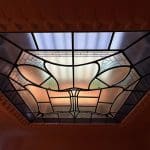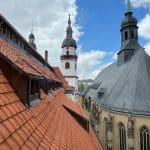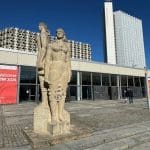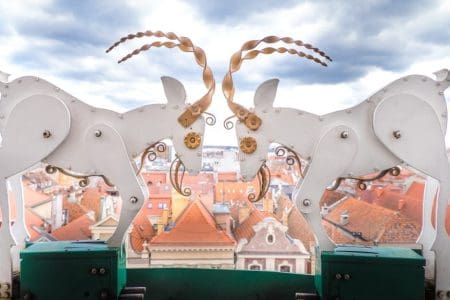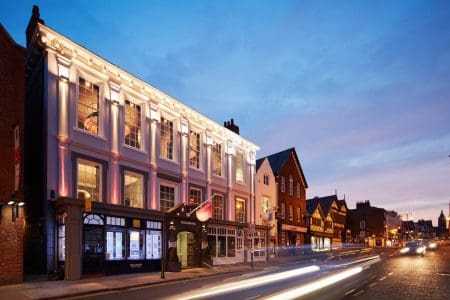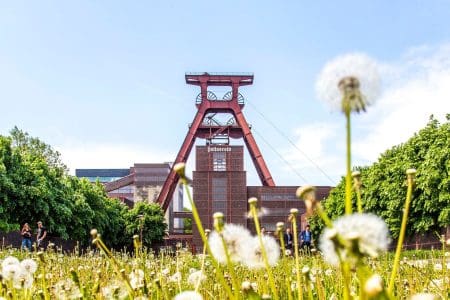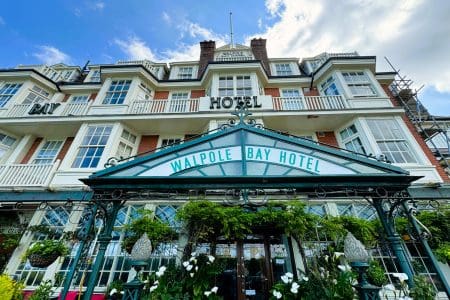In 2025, Chemnitz will be one of the European Capitals of Culture alongside Nova Gorica in Slovenia. At first this might seem a strange choice. The Saxon city has a long industrial tradition – it has been dubbed the Manchester of Germany, and is twinned with that city as well as Łódź in Poland. However, just like the latter city, which I visited last year, there is much to appreciate in Chemnitz should you delve deeper.
Karl Marx Monument
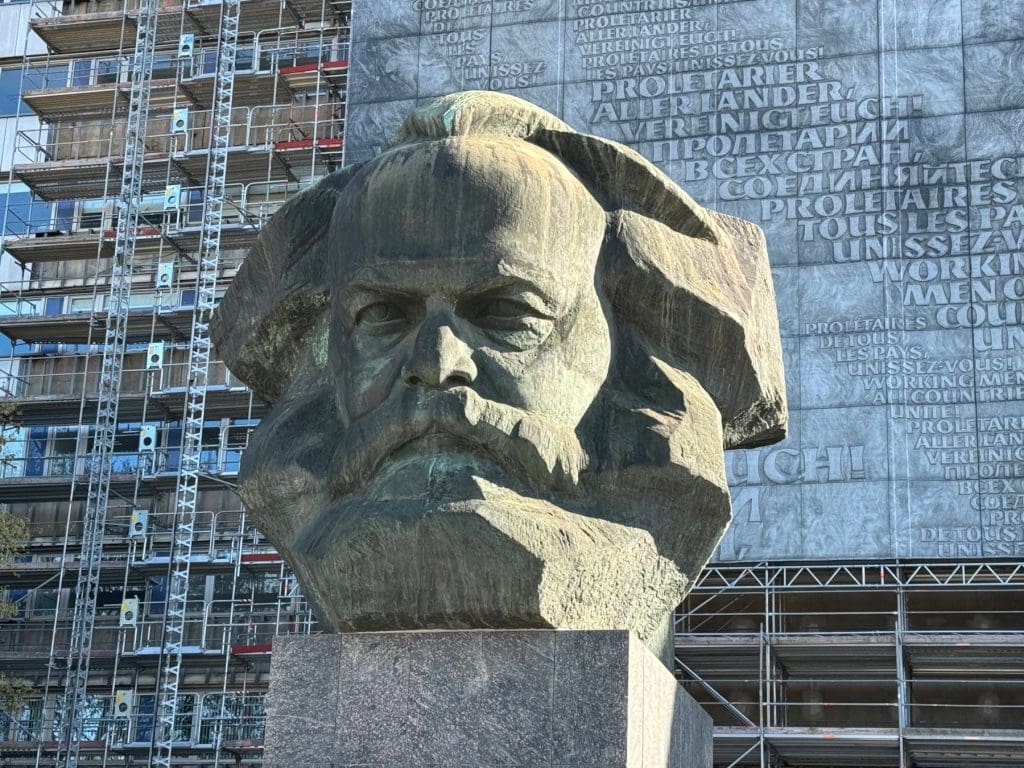
Not that there is any need to delve at all to appreciate perhaps its most famous structure – the enormous Karl Marx Monument designed by Lev Kerbel to celebrate the father of Communism. Built in 1953, the statue stands just over seven metres tall and weighs 40 tonnes.
During GDR times, Chemnitz was named Karl-Marx-Stadt, although the political theorist never visited the city, reclaiming its former name post-unification. It is an industrial city, and Marx’s theories were based on industry – albeit more Manchester than Chemnitz – so there is a tenuous link.
Chemnitz and Chimneys
Chemnitz was the first industrial city in Saxony. In the 19th century the city skyline had become dominated by chimneys. Unsurprisingly it was also one of the most polluted cities in the nation.
Its wealth stemmed, just like with Manchester, from the textiles industry with looms and mills to the fore. But eventually Chemnitz became a city associated with the manufacture of machinery. It’s part of the DNA of Chemnitz.
Villa Esche and the Art Nouveau
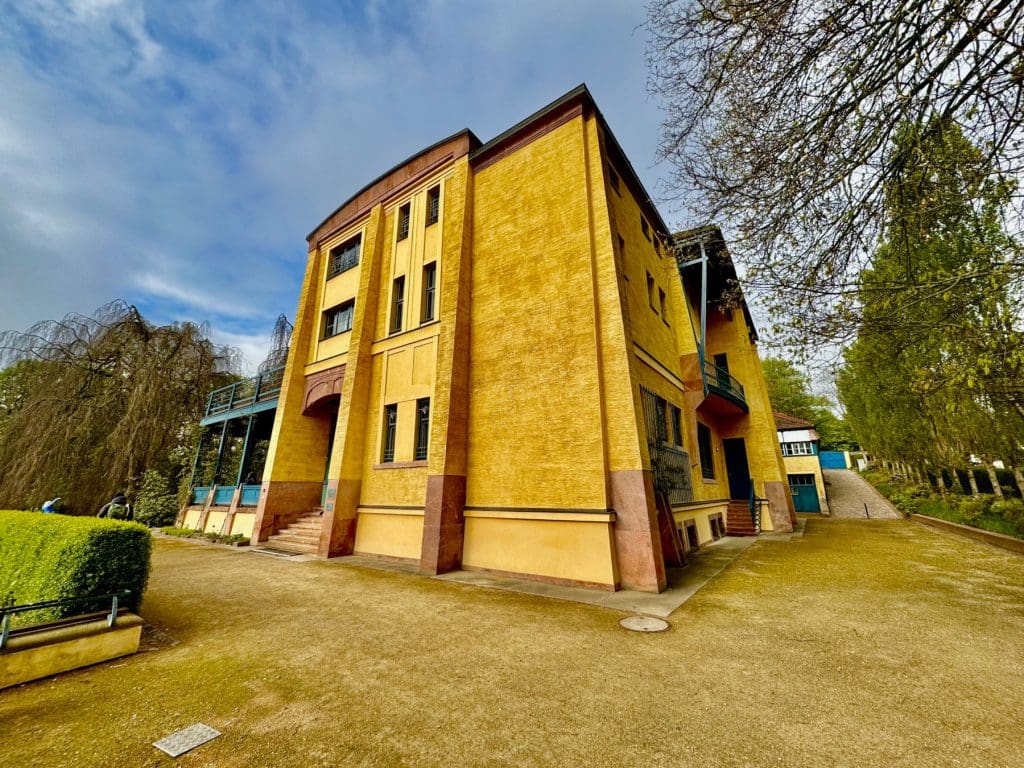
Villa Esche was built according to designs by the Belgian architect Henry van de Velde for Herbert Esche and his wife Johanna from 1902-4. On the way to the villa, we pass the Esche factory which stopped production in 1990s like much of old GDR after the fall of the wall.
Van de Velde studied at the Weimar art school that was to give birth to Bauhaus. His design is in part a link between the art nouveau (Jugendstil) design of the building and the rationalised Bauhaus style in the furniture.
It is a beautiful building in a green part of town sufficiently removed from the smoke of the city. It is here the factory owners lived, while their workers breathed in the polluted air downtown. The central skylight is especially beautiful styled in the manner of a tree – ‘esche’ means ash tree in German.
The Esche family was renowned for supporting the fine arts. Some of the furnishings such as the fireplaces, the chairs and the light fittings are incredible. A reclining chair with three settings: smoking, reading and sleeping was a present from Henry van de Velde.
At the back of the building, the old garage has become one of the most exclusive restaurants in Chemnitz – also called Villa Esche.
Chemnitz Museum of Industry
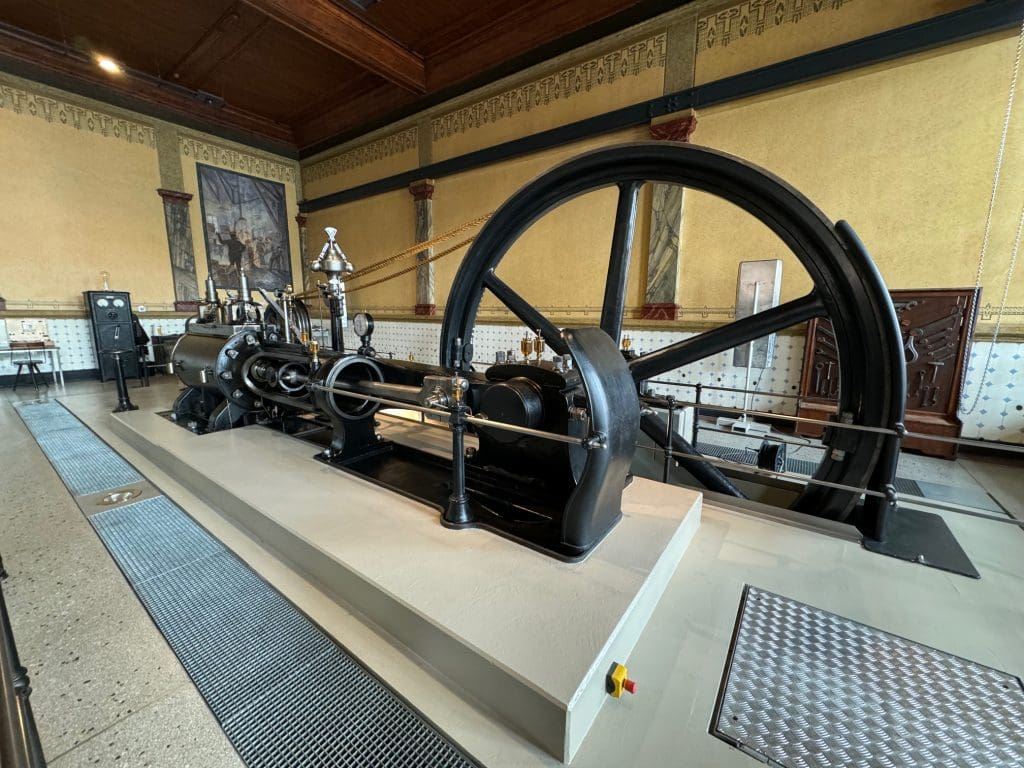
The Chemnitz Museum of Industry tells the evolution of technology and manufacturing in the region. From textile production to automotive engineering – it is here that Audi was formed.
The museum is located in an old foundry built at the start of the 20th century. It was slated for demolition until the decision was made to turn it into a museum – there are still holes drilled in the walls to place the explosives.
The museum makes for a very interesting visit and has several operating machines and engines, including a steam engine from 1896, although the oldest exhibit is a spinning machine from 1830. My personal favourite was a 1988 Trabant with a tent on its roof.
The museum will have an exhibition entitled Tales of Transformation running from 25/4/2025 to 16/11/2025 to coincide with the city being European Capital of Culture.
Schubert and Salzer produced knitting machines in their 1880s factory which employed 6,500 people at its peak. Now the area has been turned into Wirkbau with modern office space that appeals to start-ups. It also has a green roof and an impressive clock tower that dates back to 1927.
A Walk through Art Nouveau Kaßberg
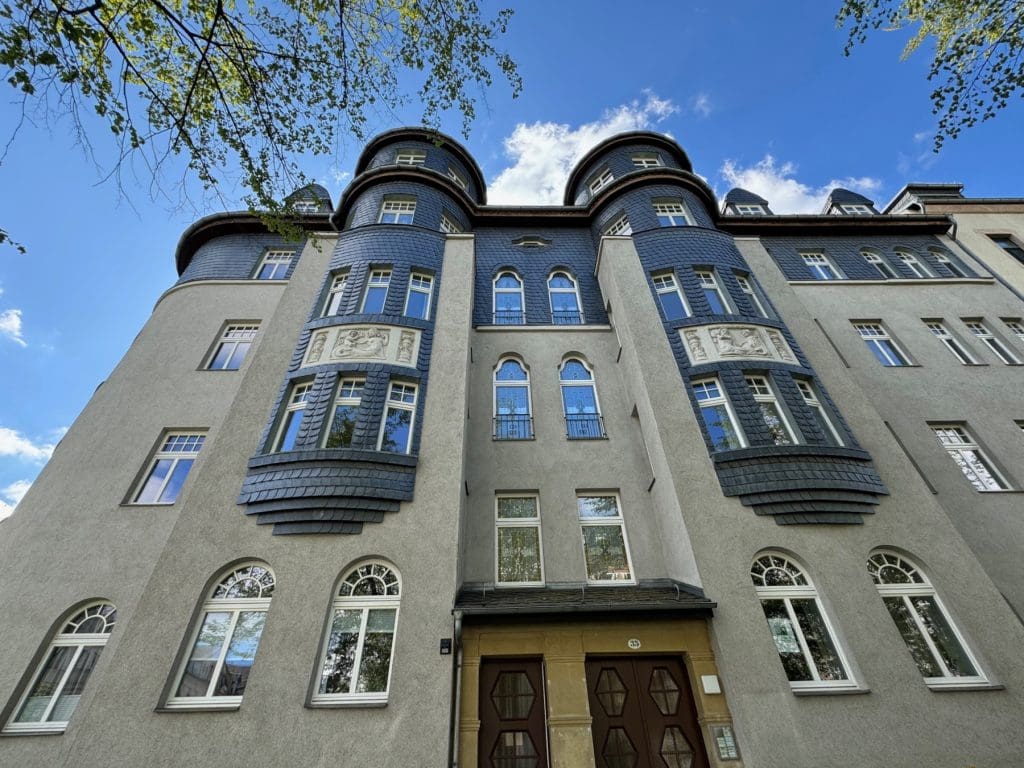
The Chemnitz Museum of Industry is just across the road from the Kaßberg part of town which is known for its art nouveau architecture. Many of the buildings stem from the late 19th and early 20th century when villas and apartment blocks were built for the bourgeoisie on the hills to the west of town, away from the smoke.
They became run down during the GDR times. Many have now been renovated, making this a most lovely walking tour. The corner houses were especially decorated due to their prominent location.
It is also a very green part of the city, with streets named after trees. Kaßberg was a cultural and professional area of Chemnitz, and it is still where creatives live.
Marianne Brandt was brought up in one of the houses in Kaßberg, which has now been turned into a small museum devoted to the female Bauhaus architect.
City Hall Tower, Theatre Square and Municipal Baths
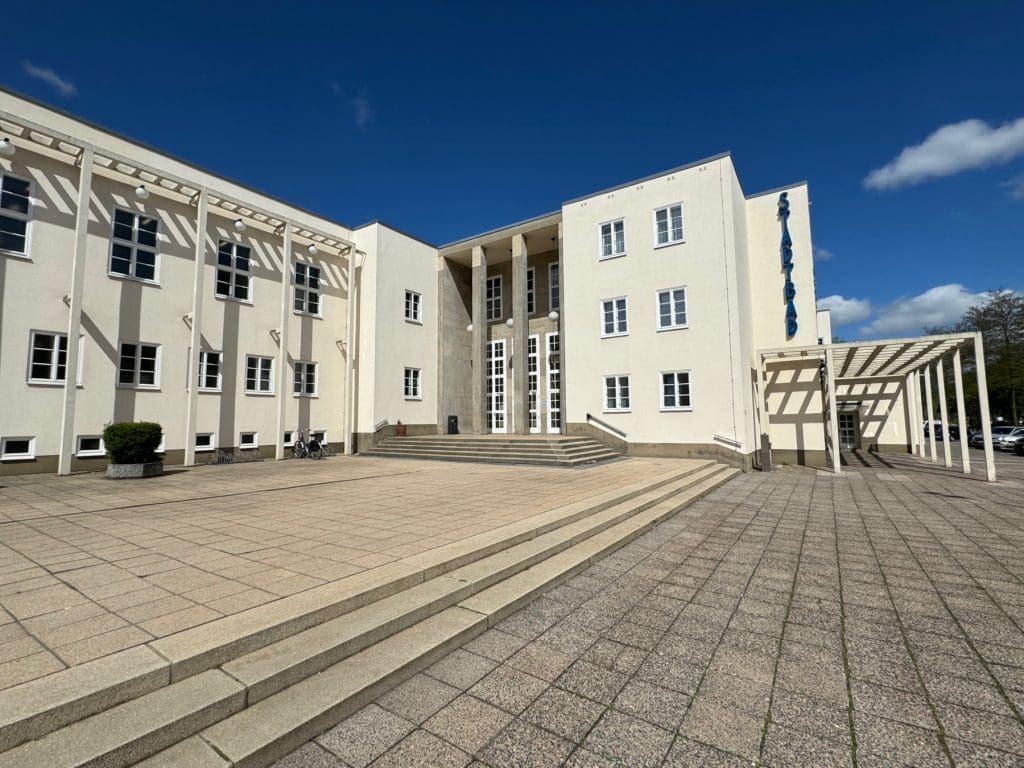
Although Chemnitz is now seen as an industrial city, its history goes back to the 12th century when a Benedictine monastery was formed and the city named Kamienica by Frederick I.
There used to be a 14th century city wall, but around 70-75% of Chemnitz was destroyed in the Second World War, as the city was targeted by the Allies due to its industrial importance. The GDR then decided to rip down many of the old buildings to construct the new Karl-Marx-Stadt.
Chemnitz city hall consists of both old and new. The old one dates back to the end of the 15th century, while the new one was built at the start of the last century in the art nouveau style. The City Hall Tower has an observation deck with panoramic views, although it was built in the 12th century, the current tower is a 1986 restoration of what the tower would have looked like in 1746. You can go on tours of both the City Hall and the Tower.
The Theatre Square was completed at the beginning of 20th century by the same architect, Richard Möbius, who designed the new town hall. The museum contains a large art collection, with one room devoted to Romanticism and another to Expressionism and Modernism. The most important collection is German Expressionism including works by Karl Schmidt-Rottluff.
The final building on my visit to Chemnitz is its municipal baths.
At the time of its construction, in 1927, the Stadtbad Chemnitz was one of the largest and most modern indoor swimming pools in Europe. Very much Bauhaus in design, the baths had a 50-metre long swimming pool and 80 bath tubs for the poor to bathe. Initially the Nazis had opposed its construction, but when it did eventually open in 1935, they took full credit. Its exterior is wonderful and the interior still has original features intact.
Chemnitz might not be everyone’s image of a capital of culture, but if like me you are interested in the transformative nature of industrial architecture it makes for an interesting visit, especially if you combine it with a trip to its more famous Saxon neighbours Dresden and Leipzig.
Chemnitz, European Capital of Culture Photo Gallery
Things to Do in Chemnitz Germany
For more inspiration on what to do in Chemnitz either go to the official Germany Travel website or Visit Saxony.
How to Get to Chemnitz Germany
You can reach Chemnitz from Leipzig station, and from there connect to Berlin.
Chemnitz Weather
For the latest weather in Chemnitz, click here.
Where to Stay in Chemnitz Germany
Mark stayed in the Super 8 by Wyndham Chemnitz. Centrally located, the hotel had spacious rooms which were well-equipped. The ground floor bar was a lively place to grab a drink before going out, and the breakfast was excellent.
All photos by Mark Bibby Jackson.
